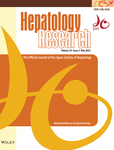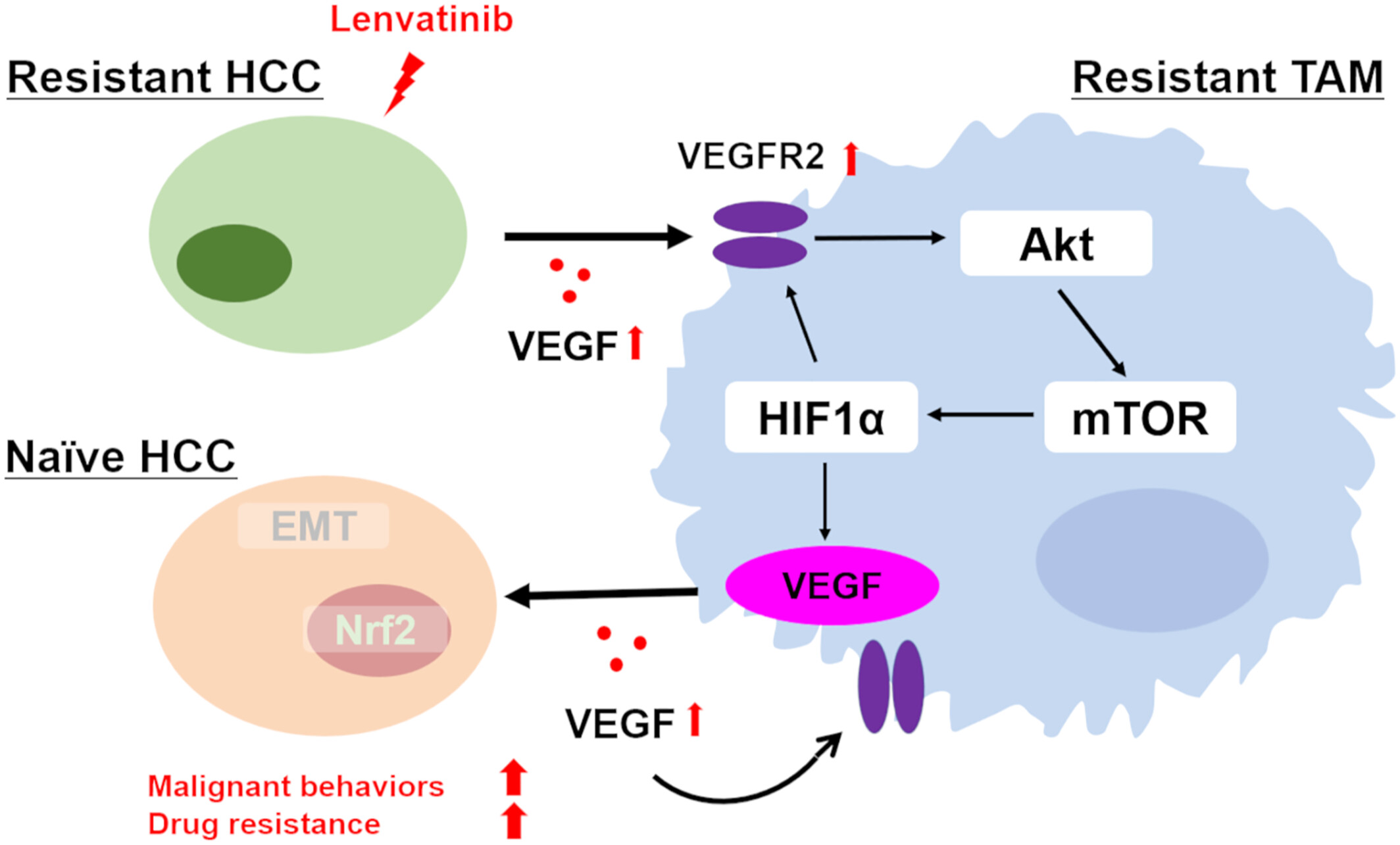Journal list menu
Export Citations
Download PDFs
ISSUE INFORMATION
EDITORIAL COMMENTARY
Impact of hepatitis C virus infection control on preventing the postoperative recurrence of intrahepatic cholangiocarcinoma
- Pages: 629-630
- First Published: 18 March 2025
VIRAL HEPATITIS
Changes in serum myostatin levels among patients with type C liver cirrhosis treated with direct-acting antivirals
- Pages: 631-637
- First Published: 22 January 2025
STEATOHEPATITIS
Evaluation of weight loss and improvement of steatotic liver disease using magnetic resonance imaging in patients with metabolic dysfunction associated steatotic liver disease
- Pages: 638-647
- First Published: 21 January 2025

This paper examines the significance of weight loss achieved by following a low-carbohydrate diet in metabolic dysfunction associated steatotic liver disease patients. Using magnetic resonance imaging and Fibroscan®, it was found that patients who lost weight showed improvements in liver fibrosis, steatosis, and alanine transaminase.
Association of liver fibrosis progression with non–liver-related mortality in metabolic dysfunction-associated steatotic liver disease
- Pages: 648-662
- First Published: 19 January 2025
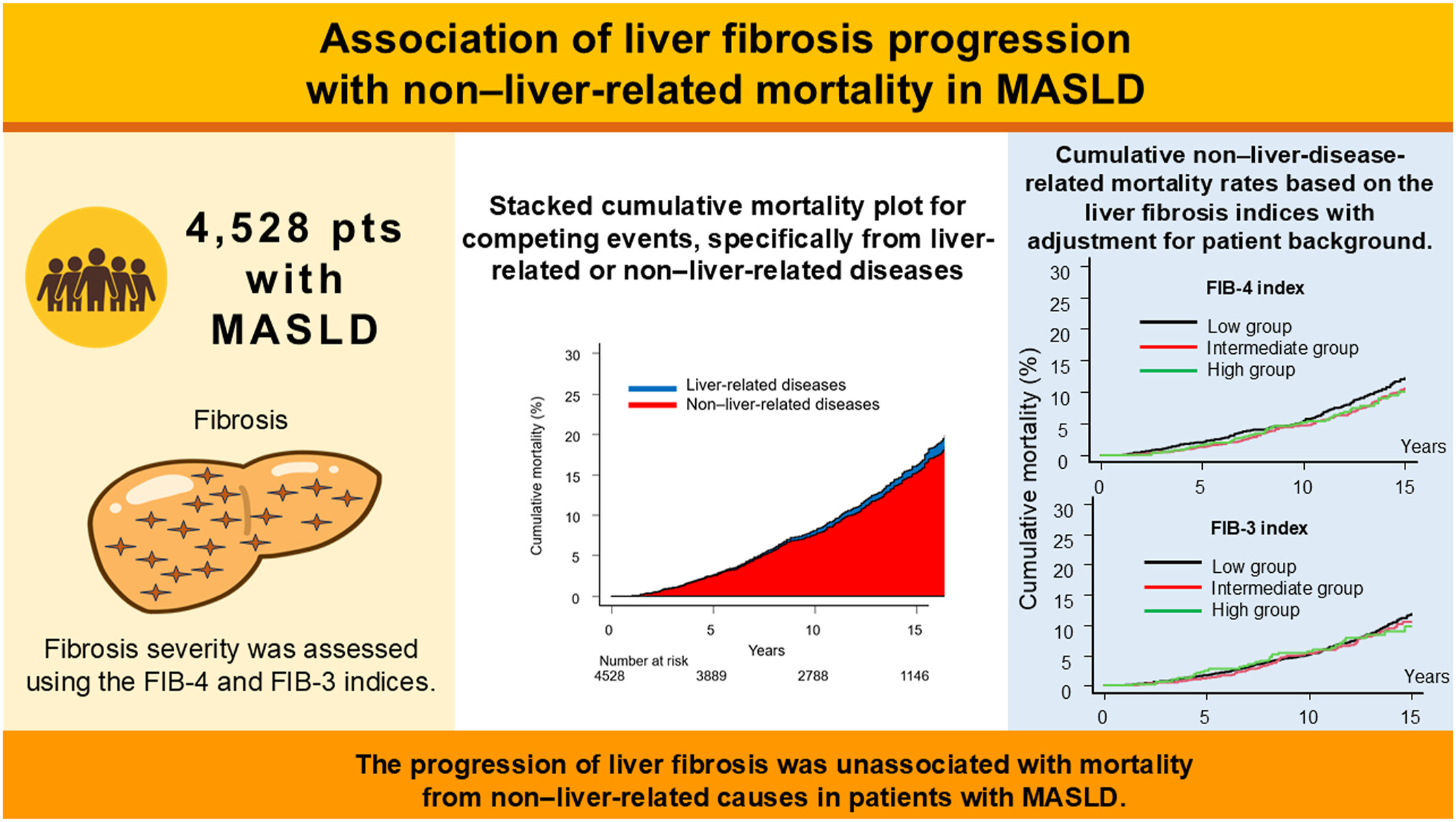
Mortality from disease-specific causes in 4528 metabolic dysfunction-associated steatotic liver disease (MASLD) was analyzed, stratified by the degrees of liver fibrosis using the Fibrosis-4 (FIB-4) and FIB-3 indices. Among the 4528 patients, 514/551 (93.3%) died from non–liver-related causes during the follow-up period. Multivariable analysis showed that the progression of liver fibrosis severity was not associated with mortality from non–liver-related causes in MASLD.
Metabolic dysfunction-associated steatotic liver disease is a risk factor for gallstones: A multicenter cohort study
- Pages: 663-674
- First Published: 09 February 2025
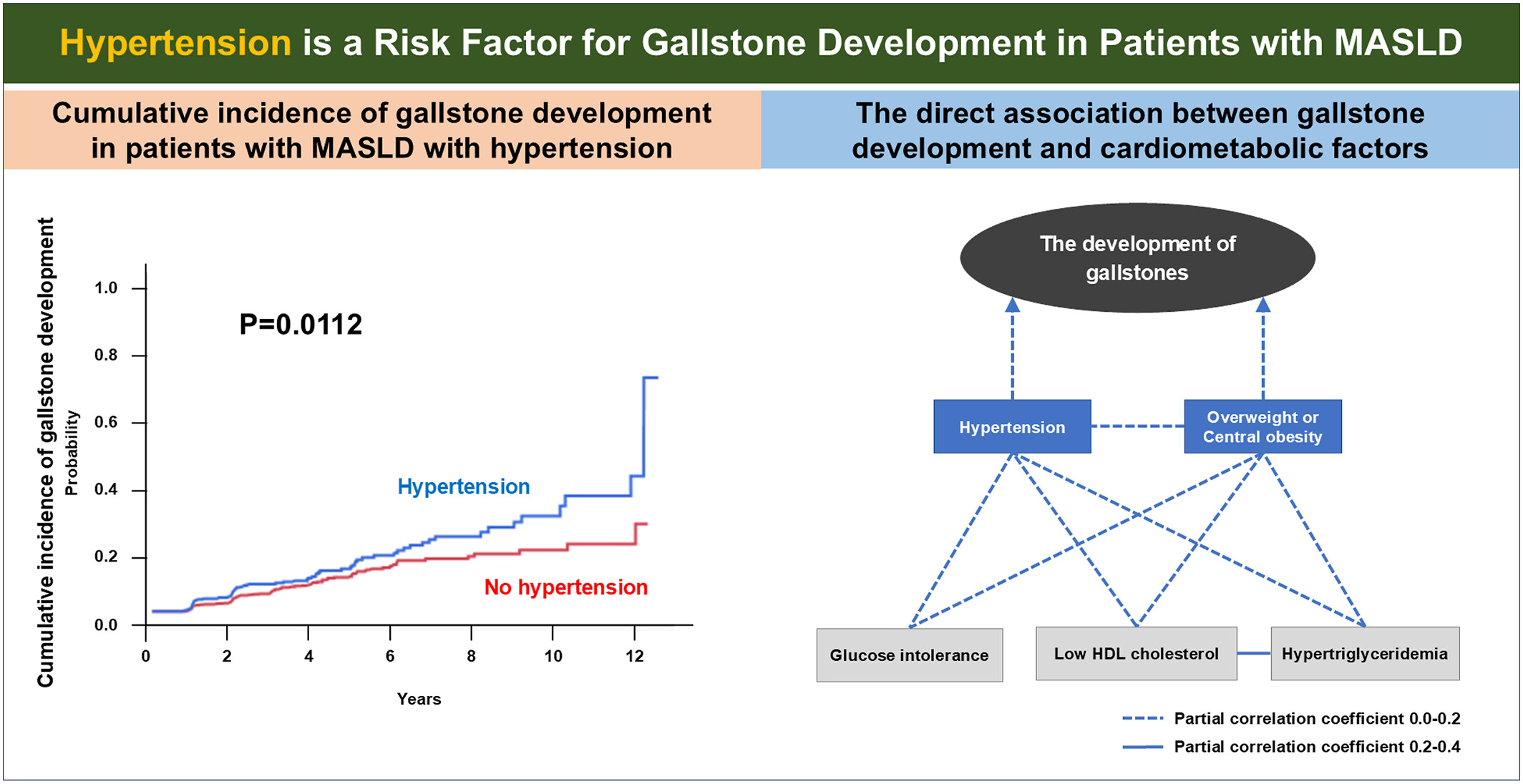
MASLD is an independent risk factor for gallstones compared with non-SLD and MetALD; patients with MetALD had a similar risk for gallstones to non-SLD patients. Hypertension is the most significant cardiometabolic risk factor for gallstones in patients with MASLD, managing hypertension may be crucial for reducing gallstone risk.
AUTOIMMUNE LIVER DISEASE
CIRRHOSIS
Pancreatic congestion is associated with exocrine pancreatic function in liver cirrhosis
- Pages: 685-695
- First Published: 31 January 2025
Serum pro-inflammatory cytokine interleukin-6 level is predictive of further decompensation and mortality in liver cirrhosis
- Pages: 696-706
- First Published: 12 February 2025

Systemic inflammation may play a pivotal role in the clinical deterioration of liver cirrhosis, and interleukin-6 is a key mediator of the cytokine network in acute inflammation. This study identified serum interleukin-6 level as a novel biomarker for predicting further decompensation, and liver-related and all-cause mortalities in patients with liver cirrhosis.
HEPATOCELLULAR CARCINOMA AND OTHER MALIGNACY
Favorable impact of hepatitis C virus infection control on recurrence after surgical resection for intrahepatic cholangiocarcinoma
- Pages: 707-717
- First Published: 14 December 2024

The impact of hepatitis C virus (HCV) infection control on prognosis after surgery for intrahepatic cholangiocarcinomas (ICCs) is unclear. We revealed that the achievement of sustained viral reaction for HCV infection is associated with a better prognosis for HCV-related ICCs, particularly solitary ICC without lymph node metastasis.
Evaluating two rechallenge strategies of immune checkpoint inhibitors: Durvalumab plus tremelimumab in advanced hepatocellular carcinoma
- Pages: 718-729
- First Published: 15 January 2025

This multicenter retrospective study evaluated durvalumab plus tremelimumab for advanced hepatocellular carcinoma in real-world practice. Results demonstrated that immune checkpoint inhibitors could be safely readministered after immune-mediated adverse events in carefully selected patients. The combination therapy showed clinical benefit in select patients previously treated with atezolizumab plus bevacizumab.
Liver-to-spleen ratio obtained from gadoxetate disodium-enhanced magnetic resonance imaging predicts intrahepatic recurrence after curative resection of hepatocellular carcinoma
- Pages: 730-740
- First Published: 10 January 2025
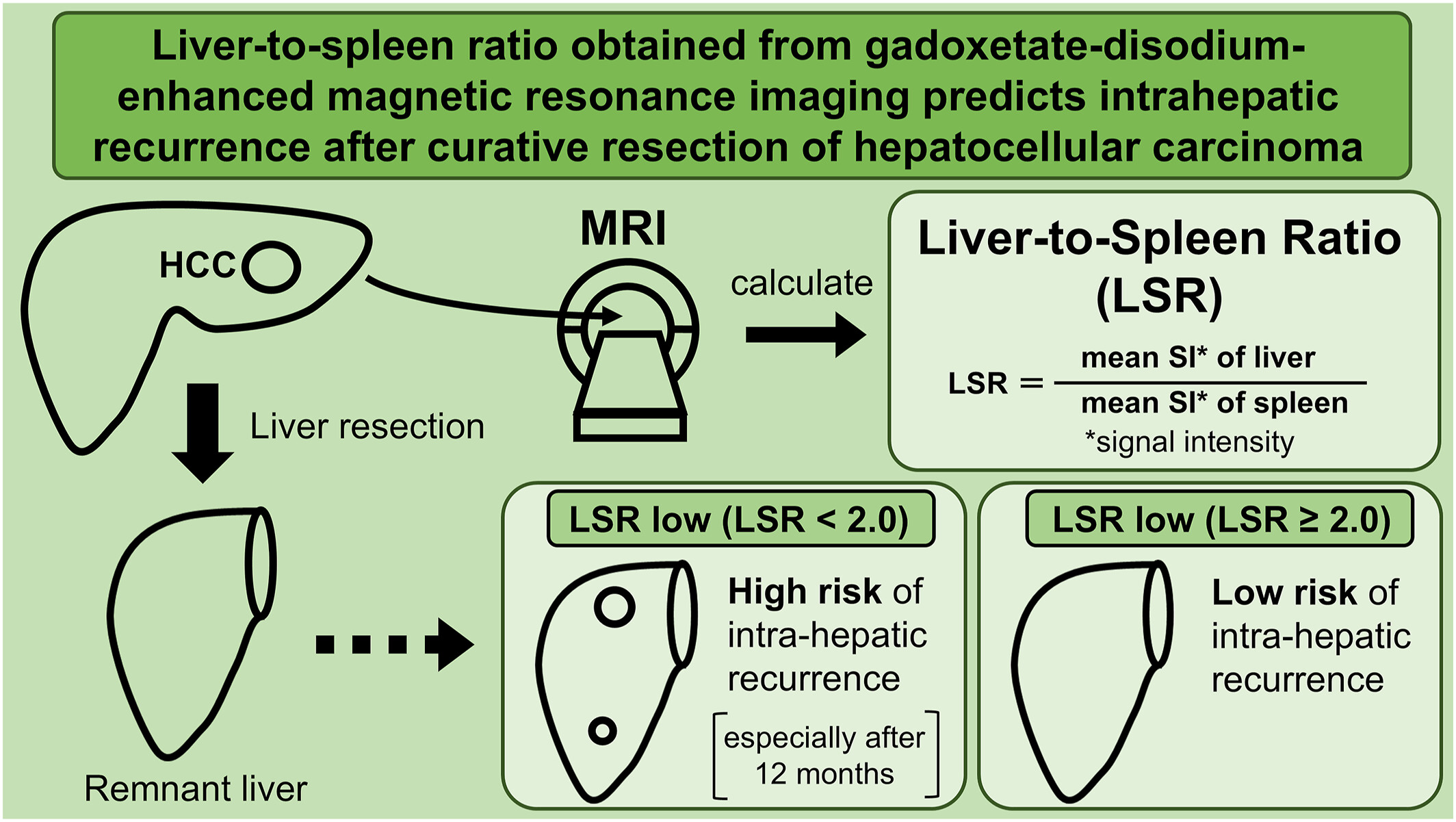
The liver-to-spleen ratio (LSR) is a parameter obtained from preoperative magnetic resonance imaging. Low LSR was an independent predictor of intrahepatic recurrence after liver surgery for liver cancer and particularly associated with late recurrence developing more than 1 year after surgery. This result suggested that LSR reflects liver damage and is associated with a risk of de novo cancer development in the remnant liver after surgery.
Impact of time-of-day atezolizumab plus bevacizumab combination therapy infusion for unresectable hepatocellular carcinoma: A retrospective multicenter study
- Pages: 741-751
- First Published: 09 February 2025
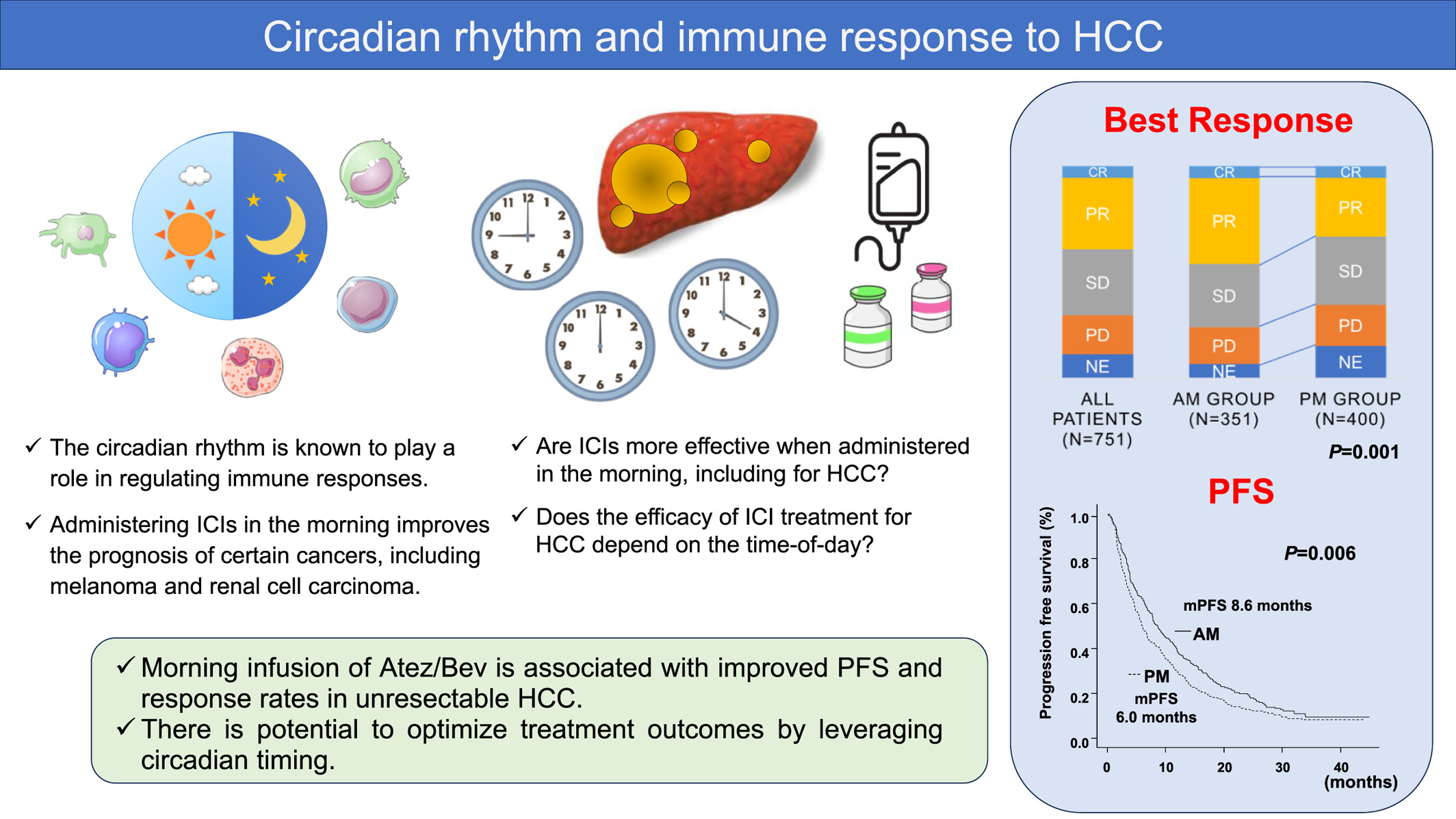
We investigated the impact of infusion timing for atezolizumab plus bevacizumab combination therapy on unresectable hepatocellular carcinoma (HCC). Morning administration resulted in significantly better median progression-free survival (PFS), objective response rate, and disease control rate compared with afternoon administration. ICI, immune checkpoint inhibitor.
Vascular endothelial growth factor released from lenvatinib-resistant hepatocellular carcinoma promotes malignant behavior and drug resistance through tumor-associated macrophages
- Pages: 752-762
- First Published: 24 February 2025
SURGERY
Impact of the revised Japanese indication criteria for deceased donor liver transplantation on liver cirrhotic patients of Child–Pugh classification B with hepatocellular carcinoma
- Pages: 763-772
- First Published: 09 February 2025
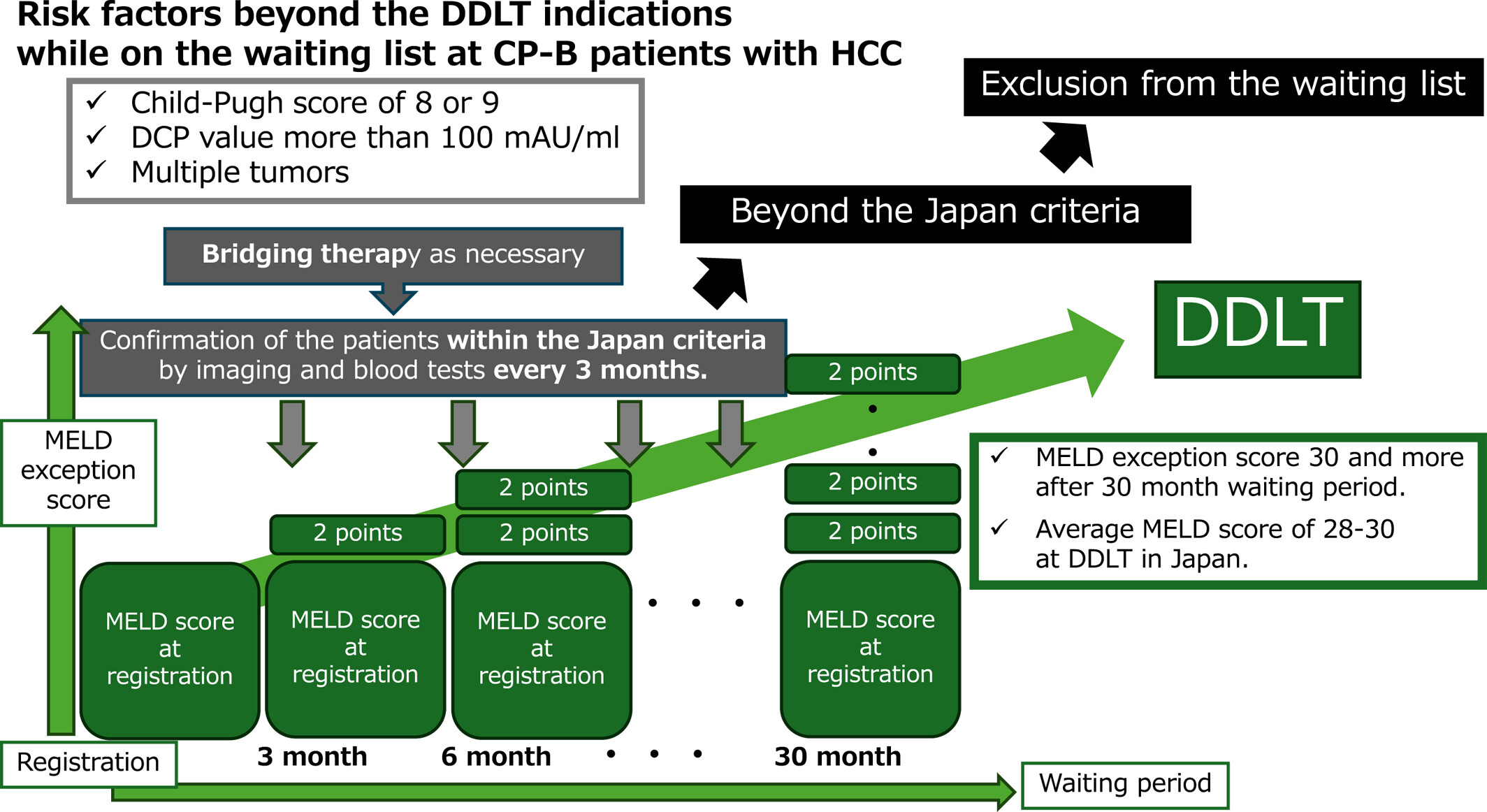
The revised Japanese deceased donor liver transplantation (DDLT) criteria may significantly benefit the majority of Child–Pugh classification B patients with hepatocellular carcinoma. However, careful decision-making and appropriate measures are essential for DDLT registration, as there is a possibility of disease progression or recurrence beyond the Japan criteria during the waiting period.
SHORT COMMUNICATION
Comparison of hepatitis B virus genotype B and C patients in Japan in terms of family history and maternal age at birth
- Pages: 773-779
- First Published: 08 February 2025
CORRECTION
Correction to “Switching from combination therapy with entecavir hydrate plus tenofovir alafenamide fumarate to tenofovir alafenamide fumarate monotherapy in patients with chronic hepatitis B based on nucleotide sequences of hepatitis B virus pregenome RNA”
- Page: 780
- First Published: 04 February 2025
Correction to “Therapeutic efficacy of lenvatinib as third-line treatment after regorafenib for unresectable hepatocellular carcinoma progression”
- Page: 781
- First Published: 04 February 2025




